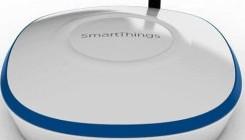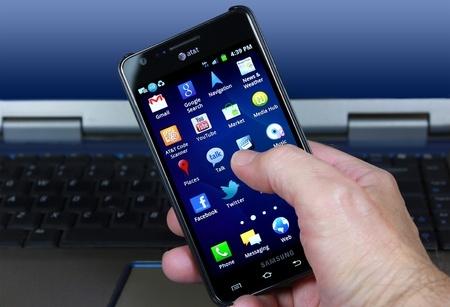 The Internet of Things is a parallel world of machine-to machine traffic that replaces human data input, such as touching keys on a smartphone, with sensors. The sensors take data from the physical world and connect it to the Internet via microcontrollers, small-footprint computers, radios, modems and routers. The data can then be stored on servers, acted on by other computers or perhaps viewed via a mobile app. While mobile apps will be around for a long time, they represent just one part of the ramp-up of sensor-based technologies. The technology is already being used in cars, buildings and Unmanned Aerial Vehicles, the formal name for drones. Learning how the sensors work with the connectivity and server/database back ends, along with their companion mobile apps, is sure to result in a valuable skill set as business models catch up to the possibilities. IoT projects have been in heavy development for the past three or four years. Developers are increasingly marrying different flavors of microcontrollers to different modes of connectivity, from plain-old wired Ethernet modules to cellular modems and wide selection of radio modules. These might include WiFi, Xbee, RFM12Bs and even tiny-little RF transmitter/receiver pairs. They connect those sensors to the Internet and, as I said, allow remote applications to productively use the resultant data.
The Internet of Things is a parallel world of machine-to machine traffic that replaces human data input, such as touching keys on a smartphone, with sensors. The sensors take data from the physical world and connect it to the Internet via microcontrollers, small-footprint computers, radios, modems and routers. The data can then be stored on servers, acted on by other computers or perhaps viewed via a mobile app. While mobile apps will be around for a long time, they represent just one part of the ramp-up of sensor-based technologies. The technology is already being used in cars, buildings and Unmanned Aerial Vehicles, the formal name for drones. Learning how the sensors work with the connectivity and server/database back ends, along with their companion mobile apps, is sure to result in a valuable skill set as business models catch up to the possibilities. IoT projects have been in heavy development for the past three or four years. Developers are increasingly marrying different flavors of microcontrollers to different modes of connectivity, from plain-old wired Ethernet modules to cellular modems and wide selection of radio modules. These might include WiFi, Xbee, RFM12Bs and even tiny-little RF transmitter/receiver pairs. They connect those sensors to the Internet and, as I said, allow remote applications to productively use the resultant data.
A New Niche for Mobile Developers
If you're bored creating routine mobile apps and want to massively diversify your skill set, consider exploring the Internet of Things, or IoT.  The Internet of Things is a parallel world of machine-to machine traffic that replaces human data input, such as touching keys on a smartphone, with sensors. The sensors take data from the physical world and connect it to the Internet via microcontrollers, small-footprint computers, radios, modems and routers. The data can then be stored on servers, acted on by other computers or perhaps viewed via a mobile app. While mobile apps will be around for a long time, they represent just one part of the ramp-up of sensor-based technologies. The technology is already being used in cars, buildings and Unmanned Aerial Vehicles, the formal name for drones. Learning how the sensors work with the connectivity and server/database back ends, along with their companion mobile apps, is sure to result in a valuable skill set as business models catch up to the possibilities. IoT projects have been in heavy development for the past three or four years. Developers are increasingly marrying different flavors of microcontrollers to different modes of connectivity, from plain-old wired Ethernet modules to cellular modems and wide selection of radio modules. These might include WiFi, Xbee, RFM12Bs and even tiny-little RF transmitter/receiver pairs. They connect those sensors to the Internet and, as I said, allow remote applications to productively use the resultant data.
The Internet of Things is a parallel world of machine-to machine traffic that replaces human data input, such as touching keys on a smartphone, with sensors. The sensors take data from the physical world and connect it to the Internet via microcontrollers, small-footprint computers, radios, modems and routers. The data can then be stored on servers, acted on by other computers or perhaps viewed via a mobile app. While mobile apps will be around for a long time, they represent just one part of the ramp-up of sensor-based technologies. The technology is already being used in cars, buildings and Unmanned Aerial Vehicles, the formal name for drones. Learning how the sensors work with the connectivity and server/database back ends, along with their companion mobile apps, is sure to result in a valuable skill set as business models catch up to the possibilities. IoT projects have been in heavy development for the past three or four years. Developers are increasingly marrying different flavors of microcontrollers to different modes of connectivity, from plain-old wired Ethernet modules to cellular modems and wide selection of radio modules. These might include WiFi, Xbee, RFM12Bs and even tiny-little RF transmitter/receiver pairs. They connect those sensors to the Internet and, as I said, allow remote applications to productively use the resultant data.
 The Internet of Things is a parallel world of machine-to machine traffic that replaces human data input, such as touching keys on a smartphone, with sensors. The sensors take data from the physical world and connect it to the Internet via microcontrollers, small-footprint computers, radios, modems and routers. The data can then be stored on servers, acted on by other computers or perhaps viewed via a mobile app. While mobile apps will be around for a long time, they represent just one part of the ramp-up of sensor-based technologies. The technology is already being used in cars, buildings and Unmanned Aerial Vehicles, the formal name for drones. Learning how the sensors work with the connectivity and server/database back ends, along with their companion mobile apps, is sure to result in a valuable skill set as business models catch up to the possibilities. IoT projects have been in heavy development for the past three or four years. Developers are increasingly marrying different flavors of microcontrollers to different modes of connectivity, from plain-old wired Ethernet modules to cellular modems and wide selection of radio modules. These might include WiFi, Xbee, RFM12Bs and even tiny-little RF transmitter/receiver pairs. They connect those sensors to the Internet and, as I said, allow remote applications to productively use the resultant data.
The Internet of Things is a parallel world of machine-to machine traffic that replaces human data input, such as touching keys on a smartphone, with sensors. The sensors take data from the physical world and connect it to the Internet via microcontrollers, small-footprint computers, radios, modems and routers. The data can then be stored on servers, acted on by other computers or perhaps viewed via a mobile app. While mobile apps will be around for a long time, they represent just one part of the ramp-up of sensor-based technologies. The technology is already being used in cars, buildings and Unmanned Aerial Vehicles, the formal name for drones. Learning how the sensors work with the connectivity and server/database back ends, along with their companion mobile apps, is sure to result in a valuable skill set as business models catch up to the possibilities. IoT projects have been in heavy development for the past three or four years. Developers are increasingly marrying different flavors of microcontrollers to different modes of connectivity, from plain-old wired Ethernet modules to cellular modems and wide selection of radio modules. These might include WiFi, Xbee, RFM12Bs and even tiny-little RF transmitter/receiver pairs. They connect those sensors to the Internet and, as I said, allow remote applications to productively use the resultant data.


